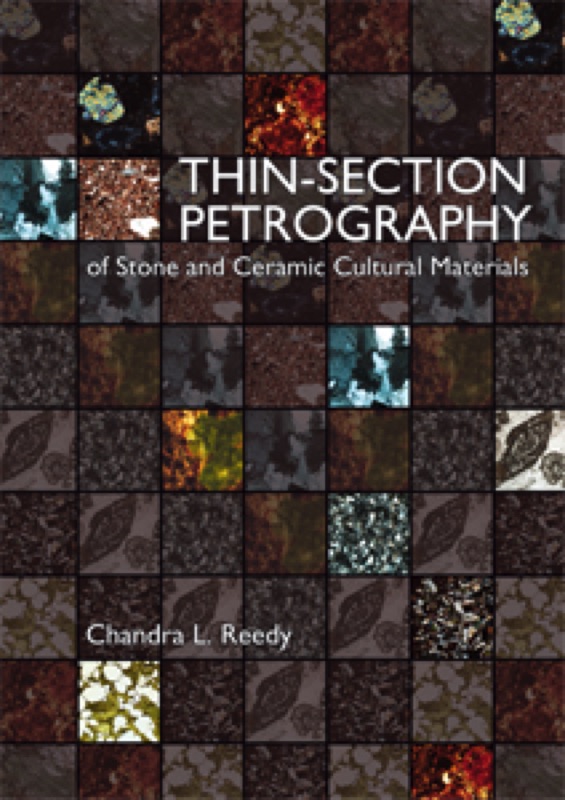This manual is a comprehensive illustrated overview of the minerals and textures seen in polarized light microscopy of cultural artefacts. It focuses on the specific applications of thin-section petrography to the study of cultural materials made of stone (as found in architecture, sculpture, tools etc.) and ceramic objects (earthenware, stoneware, porcelain, brick and tile, etc.). The reader can learn the techniques used to identify and characterize such materials; to differentiate between them; to monitor the extent of their deterioration; to determine where they may have originated; and to interpret their fabrication, decoration, and history of use. The author has selected the most representative cultural materials for which thin-section petrography has been used as a major research tool and conducted a thorough survey of the literature indicating landmark publications from the past and more recent scholarship.
This book is accompanied by a CD-ROM that illustrates all the photomicrographs available in the book, but in addition allows the viewer to study each image in both plane polarized and crossed polarized light.
Acknowledgments
Accompanying CR-ROM information
Introduction
Methodology of thin-section petrography
Problems unique to cultural materials
Organization of chapters
Volcanic igneous stone materials
Obsidian, pumice, and scoria
Obsidian
Pumice
Scoria
Tuff
Tuff as a cultural material
Tuff deterioration mechanisms and conservation treatments
Rhyolite
Dacite
Trachyte
Trachyte as a cultural material
Trachyte deterioration mechanisms
Andesite
Basalt and diabase
Basalt
Diabase
Phonolite and tephrite
Phonolite
Tephrite
Plutonic igneous stone materials
Granite
Granite as a cultural material
Granite deterioration mechanisms
Granite conservation treatments
Granodiorite
Granodiorite as a cultural material
Granodiorite deterioration mechanisms
Tonalite
Diorite
Gabbro
Gabbro as a cultural material
Gabbro deterioration mechanisms
Syenite
Monzonite
Anorthosite
Sedimentary stone materials
Shale
Shale as a cultural material
Siltstone
Siltstone as a cultural material
Sandstone
Sandstone as a cultural material
Sandstone deterioration mechanisms and conservation treatments
Conglomerate and breccia
Sedimentary carbonates
Chalk
Limestone and dolomite
Limestone and dolomite as cultural materials
Limestone and dolomite deterioration mechanisms and conservation treatments
Travertine and tufa
Sedimentary silicates
Sedimentary silicates as cultural materials
Evaporites
Metamorphic stone materials
Slate, meta-argillite, and metasiltstone
Slate
Meta-argillite
Metasiltstone
Phyllite
Phyllite as a cultural material
Schist
Talc schist and steatite/soapstone
Greenschist, greenstone, and epidiorite
Blueschist
Schist as a cultural material
Gneiss
Gneiss as a cultural material
Marble
Marble characterization and source identification
Marble deterioration mechanisms and conservation treatments
Amphibolite
Amphibolite as a cultural material
Hornfels
Hornfels as a cultural material
Quartzite
Quartzite as a cultural material
Serpentinite
Serpentinite as a cultural material
Pottery product types and inclusions
Characterizing ceramic types
Earthenware
Stoneware
Porcelain
Stonepaste/fritware
Characterizing inclusions in clay
Methods for characterizing inclusions
Lithics
Sand
Calcium carbonates
Organic material
Grog
Other Inclusions
Pottery provenance studies
Classifying pottery using nonplastic inclusions
Identifying production groups or workshops
Examining temper changes and variation over time and space
Identifying specific geological sources of nonplastics
Pottery fabrication, use, and deterioration
Identifying clay processing choices and paste characteristics
Reconstructing forming methods
Inferring firing conditions
Deducing intended function
Interpreting voids and porosity data
Studying decoration and surface/clay body interfaces
Slips
Paint and enamel
Organic and salt coatings and "glazing"
Glazes
Transfer print
Incised, impressed, and applied decoration
Explaining technological choice, variation, and change
Studying deterioration products
Nonpottery ceramic and clay materials
Sculpture and molded or stamped objects
Bricks
Tiles
Casting core materials
References
Index
